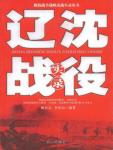Chapter 1 sequence
As we celebrate the 80th anniversary of the birth of the Chinese People's Liberation Army, and today we need to continue to inherit the glorious revolutionary tradition and carry forward the spirit of patriotism and revolutionary heroism, we cannot help but look back at the most representative figures in the People's Liberation War that have contributed to China's historical destiny and future. Strategic battles of decisive significance such as Liaoshen, Huaihai, Pingjin, and crossing the river.
These major battles not only shocked the whole of China and the whole world at that time, but also the shocking war scenes and the heroic spirit of swallowing mountains and rivers are undoubtedly still rare teaching materials and great inspiration for people today. and educational significance.
The first strategic decisive battle, the Liaoshen Campaign, was briefly summarized as follows: In the autumn of 1948, the Central Committee of the Communist Party of China and the Central Military Commission decided to launch a strategic decisive battle with the Kuomintang army on the Northeast battlefield based on the development of the war situation.At that time, the Kuomintang Army Wei Lihuang Group in the Northeast had 4 corps, 14 armies, 44 divisions (brigades), and a total of about 550,000 local troops. They were huddled in three isolated areas of Changchun, Shenyang, and Jinzhou. A state of powerlessness and wanting to withdraw.The People's Liberation Army has more than 1 million troops in the Northeast, which has a clear advantage. On September 12, 1948, the Northeast Field Army launched the Liaoshen Campaign with the cooperation of the people.The entire campaign included three stages: the Battle of Jinzhou, the Battle of Western Liaoning, and the liberation of Shenyang and Yingkou.
The Northeast Field Army besieged Jinzhou with 6 columns, 1 artillery column, and 1 tank battalion. Conquered Yi County on October 1; launched a general attack on Jinzhou City on October 14. After 31 hours of fierce fighting, more than 100,000 defending enemies were wiped out.At the same time, the troops defending Tashan prevented the enemy from Jinxi and Shenyang from reinforcing Jinzhou.After the liberation of Jinzhou, Zeng Zesheng, commander of the 60th Army of the Kuomintang garrison in Changchun, led an uprising.Then, Zheng Dongguo, deputy commander-in-chief of the Northeast "Suppression General", and Li Hong, commander of the New Seventh Army, led their troops to surrender, and Changchun was liberated peacefully. On October 26, the Northeast Field Army surrounded the Ninth Corps of the Kuomintang Army in the Heishan and Dahushan areas in western Liaoning. After two days and one night of fierce fighting, more than 100,000 enemies were wiped out, and Liao Yaoxiang, the commander of the enemy corps, and 3 of the five army commanders were captured. indivual.After the Battle of Western Liaoning, the Northeast Field Army took advantage of the victory to advance, liberated Shenyang and Yingkou on November 2, and wiped out more than 140,000 enemies.In the Battle of Liaoshen, more than 470,000 Kuomintang troops were wiped out, except for more than 10,000 people who fled from Yingkou by sea.So far, the People's Liberation Army has liberated the entire Northeast.
This strategic decisive battle has been going back nearly 60 years, and people basically know the above-mentioned overview, but they may not be completely clear about those important details and little-known historical materials, such as: why the first decisive battle started from At the beginning of Liaoshen, what role did the United States and the Soviet Union play in it? Why did Chiang Kai-shek remove its generals? How did Mao Zedong direct the war in the small villa? Why did Lin Biao insist on fighting Changchun? Those who escaped, where did they flee to...
These details and inside stories may be more meaningful for people to understand the ins and outs of this battle in more detail, to be familiar with the superb wisdom, strategy and command art of our army commander, and to perceive the heroic and tenacious fighting spirit of the People's Liberation Army.Therefore, this book takes the name as its name, selects some viewpoints that people may not be familiar with, and makes a comprehensive and detailed description.
This book focuses on explaining the struggle strategies of the Chinese Communist Party and the two parties in this battle, the decision-making of the campaign, the deployment of generals and troops, especially some details of how the Kuomintang army failed and how the People's Liberation Army won.Of course, it is not to describe some internal secrets that cannot be disclosed.
The narration of history must respect history, and there must be no falsehood or arbitrariness.Although this book adopts the style of documentary literature, it is based on authoritative historical materials, and the plots and facts are well-founded.To this end, we refer to a large number of relevant military history, war history materials and treatises.Here, we would like to express our heartfelt thanks to the authors of these historical materials (attached).

